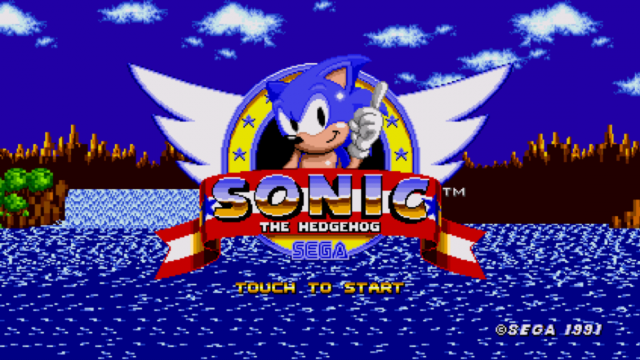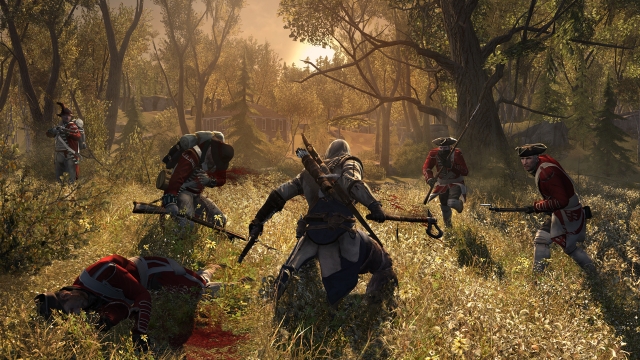
Generational Gaming
A few days ago, someone asked me a question that made me stop and think: ‘why aren’t there any games for kids these days?’ Of course, the statement in and of itself is just completely false; don’t worry, that’s not what stumped me. It did, however, make me realise that while there are plenty of child-friendly games out there at the moment, someone unfamiliar with the medium could very easily be fooled into thinking that the videogame scene is nothing but big men with guns and FIFA. The reason for that? The face of our industry is changing. Once upon a time, videogames meant cartoon characters and simplistic game design that just about anyone could play. When the medium was relatively new after all, you had to do anything you could to broaden your audience (plus, you know, HD wasn’t exactly a thing back then).
Think back to the big games of the ‘80s and ‘90s, and the majority of the games you’ll name will be kid-friendly. Pac-Man, Super Mario Bros., Sonic The Hedgehog, The Legend of Zelda, all the way up to the likes of Crash Bandicoot and Spyro at the end of the 20th century. These were huge AAA titles that raked in the cash for their respective publishers and developers. I’m sure you can think of plenty more, and that’s entirely the point. For much of this time period, the biggest videogames were made for kids (or at least had kids in mind), because children were the primary target audience for game designers. If you wanted to make a successful game in the ‘80s, you needed a great, simple idea and, more often than not, a lovable mascot.

Sonic was nothing short of an international sensation when he was launched in 1991. In a large part due to his child friendly nature.
There are exceptions to this, of course: Goldeneye and Doom being notable examples, but even in the ‘90s the top selling games were basically either Mario, Pokémon or Tetris. Take a peek at the biggest games of the 2000s (critically and commercially) and you’ll see a very different story. Mass Effect 2, GTA IV, Call of Duty: Modern Warfare 3, Halo 3, the list goes on like this with the exception of reliable ol’ Nintendo with Mario and, well, Wii Sports. This state of affairs has only increased from 2010 as the Wii declined in interest and the ‘mature’ consoles began to dominate. In fact, you only have to look at the way modern consoles are marketed in comparison to how the NES was perceived to see how console gaming in particular has become less of a kids’ activity and more of a general, adult pastime.
It’s funny though, because there are still plenty of people who will say ‘aren’t videogames for kids’, and it’s usually the same person who asks ‘why aren’t there any games for kids’, ironically. Public perception of gaming may not have shifted all that much from twenty years ago (although it has certainly noticeably shifted), but the way the industry sells has, without a doubt, radically changed. Huge AAA games aren’t marketed to kids anymore; more often than not the general target audience member for a Christmas blockbuster will be aged between 16 and 30. Assassin’s Creed, Call of Duty and the plethora of other yearly icons, are almost all aimed for this age bracket. Of course, that’s not to say kids don’t play those games. We’d be fools for ignoring the reality of the situation.
 This is a relatively tame scene for a modern videogame; still not exactly child-friendly.
This is a relatively tame scene for a modern videogame; still not exactly child-friendly.
Maybe that’s the problem. Aged 21, I’m don’t exactly feel like a spring chicken anymore, so I can’t speak with much authority on this matter, but as far as I’m aware it’s much cooler, as a 13 year old, to be playing Call of Duty than it is to be playing Skylanders. If nothing else just because Call of Duty is ‘the game big brothers and sisters play’. The upside to that point is the fact that there are kids’ games out there, and some of them are very good. Minecraft is probably the one big exception to all of this. It’s a fantastic game that’s become a marketing powerhouse all while appealing to kids and adults alike, much like the great games of the ‘80s and ‘90s. The aforementioned Skylanders, while not exactly the pop culture icon of Minecraft, has found itself a fantastic niche that’s attracted a lot of kids whose parents are willing to shell out extra cash for cool, and crucially physical, toys. Oh, and obviously Nintendo continue to plug away with brilliant, child-friendly games - even if its titles don’t quite gain the attention they used to.
Despite the accidental tone of this piece, I don’t resent these changes at all. For a medium that continues to grow, and is still a little wobbly from having its training wheels removed, continued devotion to a more mature, and critical, audience can only be a good thing. Still, it’s a situation that makes me wonder how we came to this. My theory is that game developers themselves are, on the whole, aging. With that increased maturity and experience behind videogames, it’s only natural that the products being put out are more risque and possibly controversial. As with any art form, there will always be those who push the boundaries of morality and creativity, with gaming moving past its childish years, now is the chance for developers to really make a statement with their games.
 In the words of Alex Hamilton: " I reckon that elderly people's homes in the future will just be massive LAN parties"
In the words of Alex Hamilton: " I reckon that elderly people's homes in the future will just be massive LAN parties"
I’m not 100% behind that though; it may be a factor, but it’s also worth noting that the audience has also grown up. The little kids that played The Legend of Zelda for days on end are far from little anymore, many of whom will still have an interest in gaming and will naturally desire more mature, adult-oriented games. Even my Pokémon generation is now old enough to give Skylanders a discerning look (it’s great though, promise!). As the general audience age increases, it makes sense that the games being produced are generally targeting an older demographic. It’s an interesting case study in consumerism, by all accounts, and it’ll be fascinating to see how the medium develops as the audience base continues to change.
I always wonder about what I’ll be doing when I’m an old man. Like any youngster, I find it hard to picture myself not getting familiar with the latest technology. Yet history has told me that’s an incredibly optimistic attitude. Videogames, I’m sure, will be almost unrecognisable from the products we play today, and I dare say a large reason for that will be because the generation that cultivated the rise of gaming will be long gone. The day we’re injecting games into our bloodstream will also be the day CoD4 is remembered as the most influential title in gaming history. One has to wonder though: what will happen to children’s games. It seems as though they’ll always have a future; after all, there’ll always be kids. It seems unlikely they’ll ever receive the mainstream attention they had in the ‘80s and ‘90s, but as gaming becomes more and more important to daily western life, there could be a surprise over the horizon.









COMMENTS